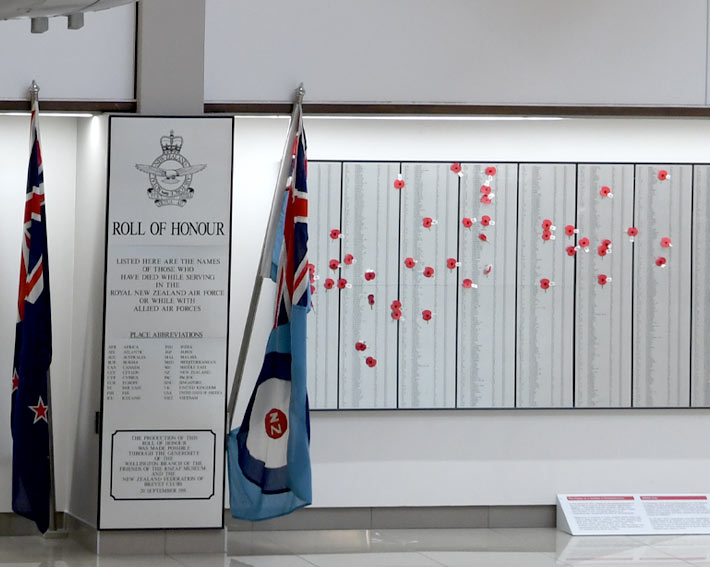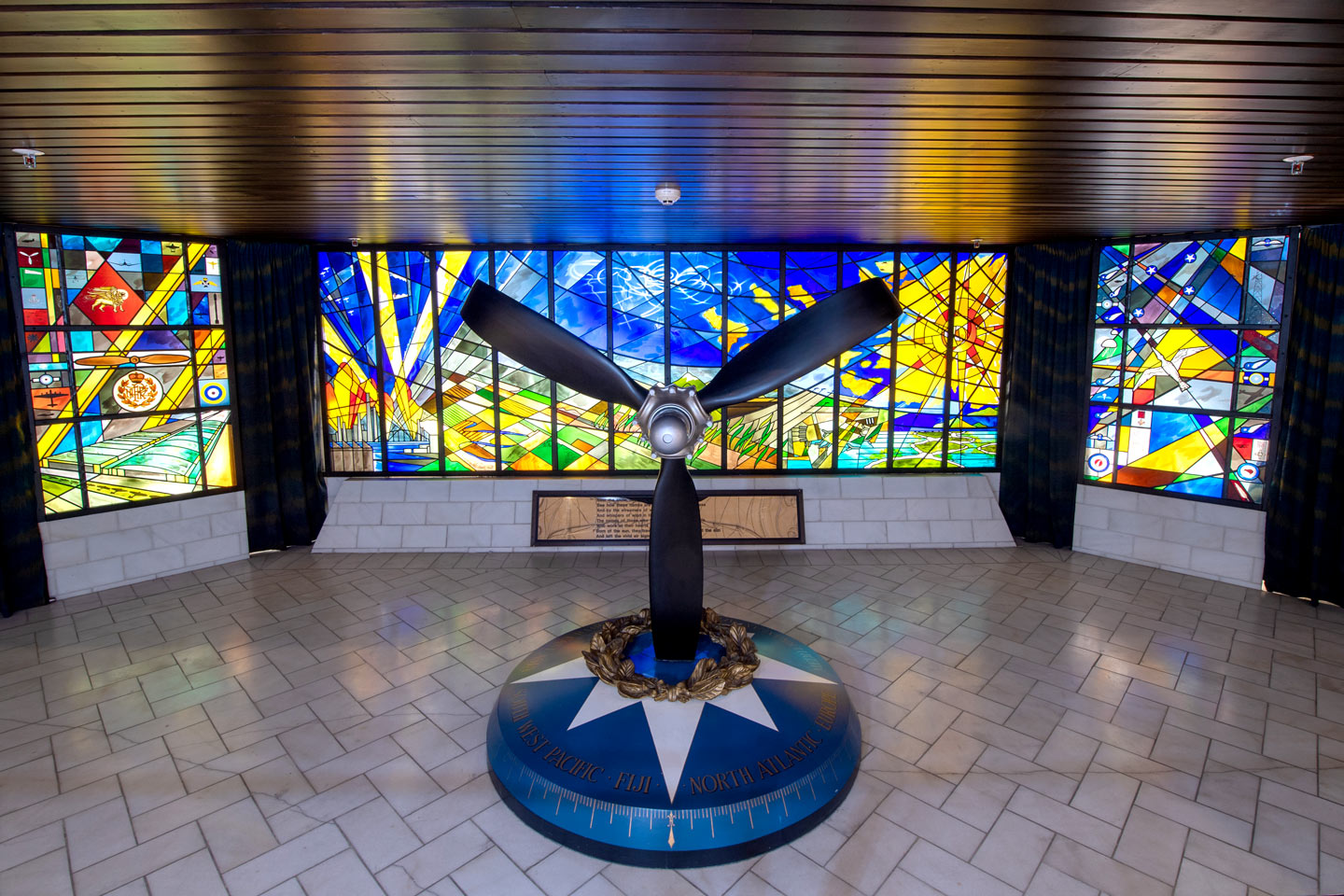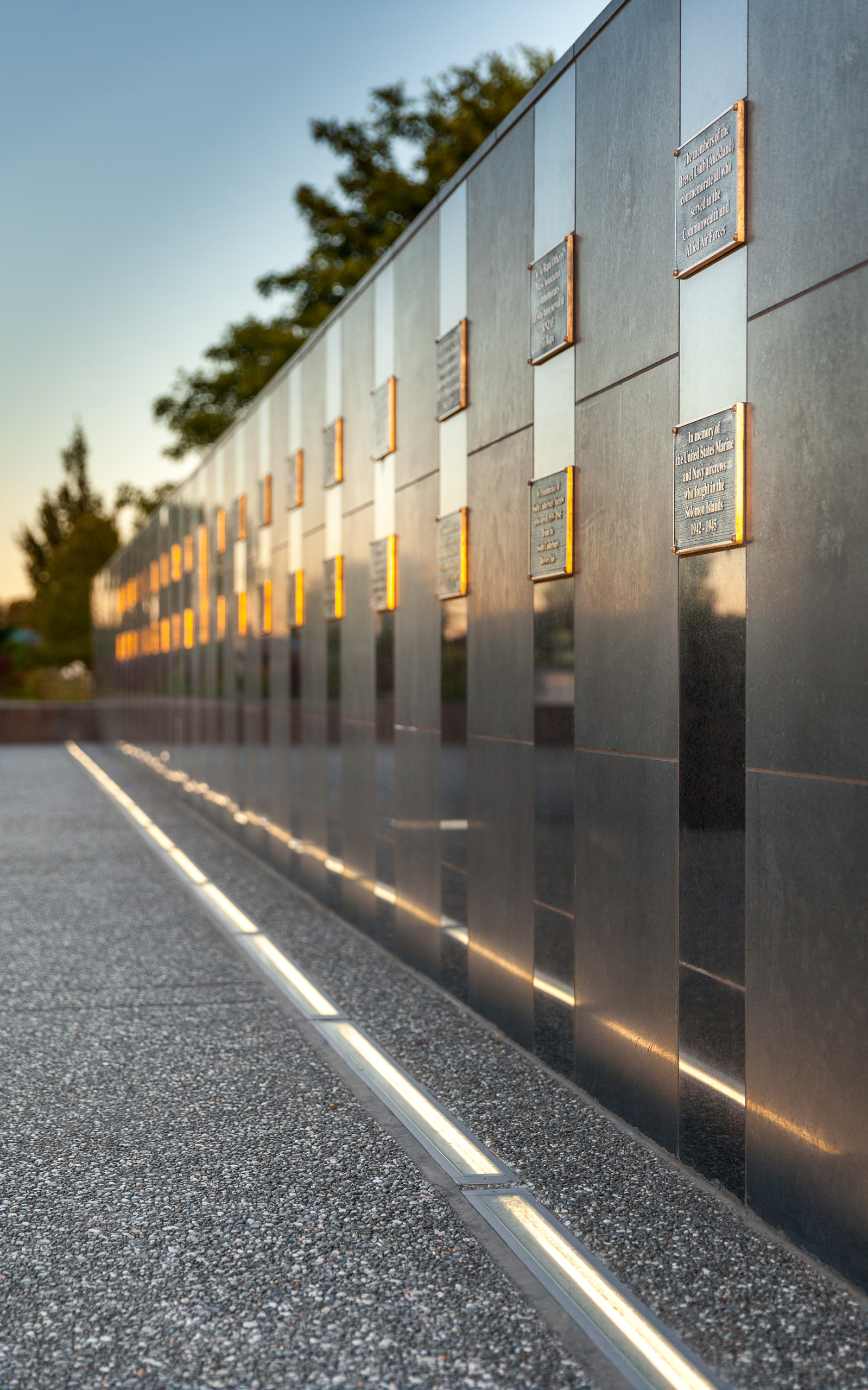Memorials
Ngā Whakamaumaharatanga

Roll of Honour
They shall grow not old, as we that are left grow old:
Age shall not weary them, nor the years condemn.
At the going down of the sun and in the morning,
We will remember them.
– The ‘Ode of Remembrance’, Laurence Binyon (1914)
The Roll of Honour is a record of the names of all New Zealanders who have died while in service with the RNZAF or other air forces since 1915.
They represent not only those who have been killed in action, but also those who have died in accidents, sickness or of natural causes while in uniform. There are over 4,600 names on the Roll, which also features the regularly changing personal story of one or more of the individuals listed.
As the Roll of Honour serves a memorial function, you are welcome to take a poppy from the bowl to place in remembrance on the wall. All koha (donations) are gratefully received and go directly to the New Zealand Returned and Services’ Association (RSA) to support veterans and their families.

The stunning stained glass window and monument stands as a tribute to the thousands of New Zealanders who gave their lives in defence of their country in air operations around the world.
Memorial Alcove
“THOSE WHO WERE TRULY GREAT”
The stunning stained glass window in the Museum’s Atrium was designed and made by RNZAF official artist Wing Commander Maurice Conly and stained glass artist Rena Jarowsewitsch. It was inspired by Stephen Spender’s poem, “I think continually of those who were truly great”.
The Symbolism Explained
Propeller: In the centre of the alcove stands an aircraft propeller with blades bent back, mounted on a compass rose. Propellers bent like this are a common result of aircraft accidents and crashes, so this reminds us once again of those who gave their lives in the air, while the compass indicates the many places around the world in which New Zealanders have served. Some of these places are named on the footing of the compass.
Left panel: The left panel of the window represents all the RNZAF’s ground trades and shows some of the insignia and images associated with them. In addition is a winged lion, the symbol of St Mark, the patron saint of the RNZAF.
Centre panel: The central panel is a memorial to all New Zealanders killed while serving with the Air Force. Much of the symbolism is taken from Stephen Spender’s poem which is quoted below it. The window also contrasts war and peace. On the left, a European city is depicted under attack and on fire, while on the right, the panel glows with light from a life-giving sun symbolising a new day, hope, growth and peace.
Right panel: The right panel represents air crew. Some of the images show insignia worn by air crew, while the kotuku, or white heron, represents flight and the four stars of the ‘Southern Cross’ constellation indicate New Zealand. A feather, or quill, in the lower right hand corner acknowledges a substantial contribution to the creation of the alcove by the family of the late Air Commodore Stan Quill CBE, DFC.

Memorial Courtyard
The memorial courtyard is a grassed and paved area of about 1,200 square metres; large enough for small parades and ceremonies, with a black basalt tiled wall and podium area.
Many of the memorial plaques that are mounted to the wall come from the Museum’s original memorial courtyard, which was demolished to make way for the building now known as the Thérèse Angelo Wing.
The new courtyard was dedicated by the Chairman of the Museum Trust Board, Air Vice-Marshal Peter Adamson CB, OBE, RNZAF (retired), and Chief of Air Force Air Vice-Marshal Peter Stockwell AFC, in a ceremony on 11 November 2013.



